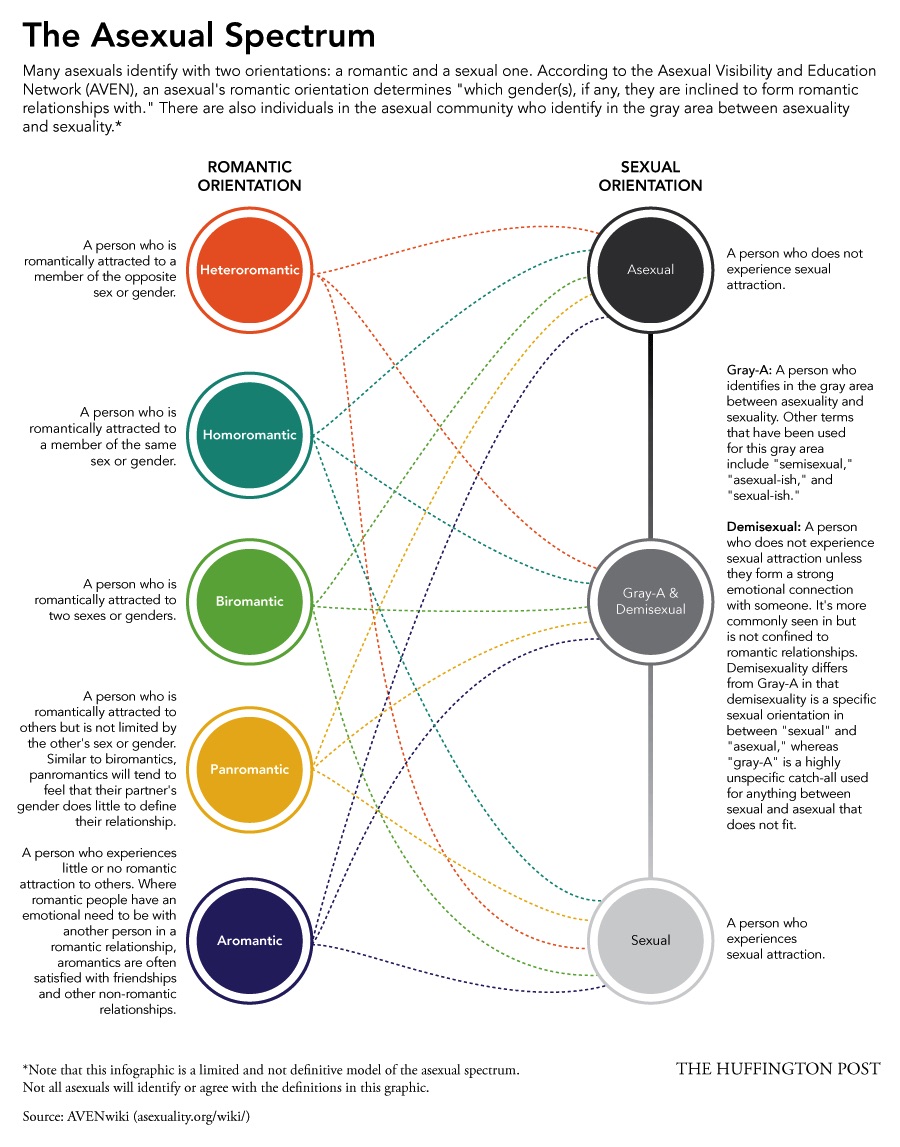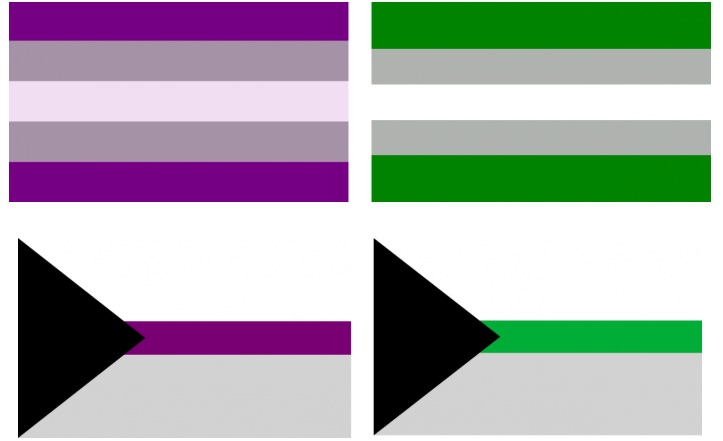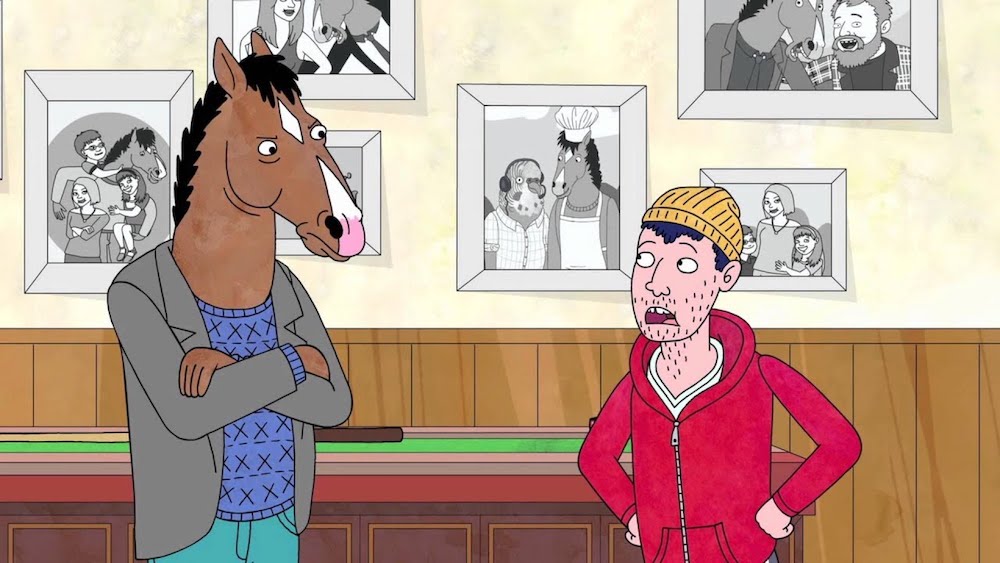Asexual. You’ve probably heard the word before, but what does asexual mean? Is there a clear-cut meaning or definition?
If you’ve got questions, you’re not alone. A 2019 survey found that 73% of people couldn’t accurately define asexual. But we’ve got some answers that’ll help.
What does it mean to be asexual? Here’s a clear-cut definition
What is an asexual person? What does it mean to be asexual? Simply put, an asexual person is one who has no sexual feelings or desires for physical intercourse with another person.
Asexuality is different from celibacy in that celibacy is seen as something you choose whereas asexuality is seen as something you are, more of an intrinsic identity. As such, the “A” in the ever-growing LGBTQIA acronym actually stands for “asexual” (and not “ally” as some people wrongly assume). The asexual community even has its own asexual Pride flag.
Never Miss a Beat
Subscribe to our newsletter to stay ahead of the latest LGBTQ+ political news and insights.

The asexual flag was developed around 2009 and has four stripes. Sources say the black stripe in the asexual flag epresents asexuality, the grey represents the grey-area between sexuality & asexuality, the white represents sexuality or non-asexual allies, and the purple represents the community. You may have seen the asexual flag at Pride events. The asexual flag sometimes flies at LGBTQ community centers and queer bars too.
It’s estimated that 1% of the world population is asexual (or “ace” as it’s also called). That may sound like a small percentage, but that’s roughly 77,000,000 people — just over the entire population of Canada and Poland combined. So it’s entirely possible that you’ve met asexual people and just not realized it.
Despite their disinterest in sex, asexual people can feel romantically, intellectually or emotionally attracted to people of one or more genders. Some asexual people don’t feel romantic attractions at all; this type of person is called an aromantic asexual.
While some asexuals are aromantic asexual, asexual dating still exists: An aromantic asexual or other types of asexuals can get into relationships or experience pleasure and/or arousal from physical contact and mutual nudity. (We’ll discuss that more below).
When it comes to describing different types of asexuals, it’s helpful to remember: There are many types of asexuality on the asexual spectrum — just as there are many different types of gay, lesbian, bisexual and other queer people on the sexual spectrum.
The asexual spectrum & types of asexuality
The questions “What does asexual mean?” and “What does it mean to be asexual?” can start to feel complicated once you learn that asexual people can self-identify in numerous ways on the asexual spectrum (or “a-spec” as it’s sometimes called). In fact, one list identified nearly 150 different types of asexuality on the asexual spectrum.
As GLAAD explains, the asexual spectrum is perhaps best described using the Split Attraction Model (SAM), a two-sided description which “splits sexual and romantic attraction into two separate” columns — when joined together, these terms help explain who you’re attracted to and how you’re attracted to them.
Contrary to popular misconception, asexual people feel different degrees of sexual and romantic attraction ranging from completely asexual and aromantic (“nonexistent”) to more sexual and romantic under certain circumstances. Also, how asexual people feel (their attraction) may sometimes differ from what they do (their actions). Societal pressure and other factors sometimes compel asexual people to have sex despite their usual disinterest in it.
The 150 different types of asexuality on the asexual spectrum provide ways for people to specifically explain how attracted (or not) they feel to sex and romance, and why. These new adjectives can help people better understand their own experiences and that they’re not “weird” or “broken.” They’ve also helped bring different types of asexual and aromantics out of isolation and into a growing “ace” community (which we’ll discuss below too).
For now, let’s take a look at some common types on the asexual spectrum and how they work.
On the left side of the image below are romantic orientations mostly involving genders, and on the right are sexual orientations describing different amounts of sexual attraction felt towards others.

Let’s start with the romantic orientations
It’s important to remember “romance” is an abstract emotional construct that means different things to different people. (Ever heard of the five love languages?) Depending on who you ask, romance can mean chocolates and roses, date nights, cuddling, gifts, special celebrations, or comfortably giving each other physical and emotional space.
Romance is something that’s more intuitively felt than specifically described, but for a working definition, “romance” generally means the conscious strengthening of an emotional connection with another person by creating deeply intimate moments together.
While some asexuals aren’t romantically attracted to anyone at all (aromantic asexual), other asexuals can be romantically oriented towards:
– people of the opposite-sex (heteroromantic asexual)
– people of the same-sex (homoromantic asexual)
– people of any gender (biromantic asexual)
– people regardless of gender (panromantic asexual)
These words may seem new to you, but they’re widely used and abbreviated in the asexual community.
Now, about the sexual orientations…
Regarding sexual orientations, some asexuals do not experience sexual attraction (asexual) and some do (sexual). Others may experience occasional sexual attraction (gray asexual or gray-sexual) or only experience sexual attraction only after they’ve developed a strong emotional bond with someone (demisexual).
The types of asexuality on the asexual spectrum get more numerous and nuanced from there. The terms describing these different types of sexual and romantic attachments often explain how one becomes attracted to people more than who one is attracted to.

There are easily over 150 terms for different sexual and romantic orientations, but here are a few:
– A reciprosexual/reciproromantic feels attracted to people when they know the person is attracted to them.
– An akoinesexual/akoineromantic experiences a lessening of attraction if the attraction is reciprocated.
– A fraysexual/freyromantic feels attracted to strangers.
– A cupioromantic/cupiosexual desires romantic or sexual relationships despite not having those feelings themselves.
It may seem odd that a community that defines itself by not having sexual or romantic feelings should have so many words describing both.
But remember: These asexual types fall along a spectrum and many asexual people still have sexual romantic feelings or find themselves in such relationships for lots of reasons such as affirmation, physical comfort, emotional connection, and societal pressure.
At their best, these terms help everyone understand the nuance different types of attraction, whether someone is asexual or not.
Am I asexual? Can an asexual quiz or asexual test tell me if I or someone else is?
You don’t need to take an asexual quiz or test to find out if you’re a biromantic asexual, a panromantic asexual or asexual at all. No asexual test could ever tell you what you are.
But asking yourself a few questions can help you better understand your feelings around sex and relationships. Here are a few that you might find helpful:
- Do you now feel or have you ever felt sexually or physically aroused by people’s physical appearance or the idea of sexual touch?
- Have you ever felt like you don’t “get” sex? Have you ever felt pressured to express sexual desire towards others just to fit in?
- Does pursuing or having sex feel intrinsically rewarding to you or does sex seem uninteresting, unimportant, inconvenient, or generally undesirable?
- Would abstinence or celibacy be difficult for you? Have you ever gone without sex for months or years? Does sex seem largely “take it or leave it” for you?
- Do you sometimes develop sexual feelings towards someone only after you’ve developed other emotional and intellectual bonds with them first?
Like other LGBTQ identities, only you can decide whether to self-identify as asexual. Everyone’s approach to sexual and emotional relationships are different, and there’s no need to apply a label if it doesn’t feel right, no matter what an asexual quiz or an asexual test might claim to tell you.
The asexual community: Asexual pride & the “asexual agenda”
Now that we’ve defined asexual, it’s time to go beyond the basic asexual meaning into asexual people’s lived experiences.
While some asexual people decide to stay single, some try asexual dating and others get into relationships (even polyamorous ones). Some enjoy feeling sexual sensations (either alone or with partners) and others have families and children.
Asexual dating is much like general dating, though sometimes it leaves out the romantic or sexual components. In asexual dating, an asexual person may go out with a sexual or asexual person(s) and participate in social and private activities they enjoy. During asexual dating, asexuals may share their unique experiences, attend asexual community events, or participate in more general activities. Asexual dating may also involve cuddling or other physical intimacy depending on one’s place on the asexual spectrum.
Asexuals have existed throughout history, but before the internet, many felt lonely or broken because they couldn’t connect with others like themselves. These days, online communities like the Asexual Visibility and Education Network (AVEN) and educational events like Asexual Awareness Week (commemorated during the last full week in October) have helped unite asexual people and lift up their experiences.
Generally speaking, asexuals just want the right to exist and to be understood without stigma, discrimination, shame or social pressure to conform, just like the rest of the LGBTQ community. Asexuality isn’t a mental disorder, it isn’t the result of trauma or an inability to get laid, and it doesn’t need to be cured. Asexuals aren’t afraid of intimacy nor are they not sex-negative slut-shamers — they have emotions and dreams just like the rest of us.
While asexuality has never been illegal, it has been hidden away and stigmatized. There are few out asexual celebrities. Media rarely depicts asexual characters and storylines, and American laws tend to favor married couples over single people. (There are over 1,049 federal benefits and many other privileges related to marriage that single, unmarried and asexual people can’t access.) In extreme cases, asexual people have even been forced into marriages or subject to violence and so-called “corrective rape” to “cure” their asexuality. Resolving these issues are key political priorities in the so-called “asexual agenda.”
Some queer people feel that asexuality shouldn’t be considered part of the LGBTQ community because they haven’t faced the same levels of historical discrimination for their gender identity or who they love. But others disagree, saying that asexuals also define themselves by their sexual attractions, are steadfast allies to the LGBTQ community, and that the “queer umbrella” shouldn’t just be defined by a subgroup’s societal hardships.
Who are some famous asexual celebrities?

There are actually a handful of asexual celebrities. The most famous asexual celebrities are likely comediennes Janeane Garofalo and Paula Poundstone, British crooner Morrissey, and reality TV fashion guru Tim Gunn. Musicians Emilie Autumn, John Frusciante, Richey Edwards, Bradford Cox, and Mike Skinner have all identified as asexual too. So has author Keri Hulme.
There are also a few well-known asexuals celebrities in pop-culture. Jughead of the Archie comics came out as asexual in 2016. Fans of Sir Arthur Conan Doyle’s Sherlock Holmes mysteries assume the fictional detective was asexual because he never exhibited sexual attraction towards others. Steven Moffat, the creator of the 2010 Sherlock TV adaptation, declared his version of the legendary detective to be asexual in one interview but he reneged in a later interview.
Sadly, there aren’t too many asexuals celebrities on TV. Among a shortlist of asexual TV characters are Todd Chavez, a supportive best friend in the animated Netflix series BoJack Horseman; Lord Varys, the royal advisor and eunuch from the HBO fantasy drama series Game of Thrones; Raphael Santiago, the vampire leader in the supernatural Freeform series Shadowhunters; Evan Waxman, the “asexual magician” in HBO’s episodic marijuana-series High Maintenance; and The Professor from Gilligan’s Island who once admitted to never feeling romantic interest in anyone.
While some fans label any character without explicit sexual orientations as asexual, some creative works have failed to properly answer the question, “What does it mean to be asexual?” by using asexuality as a punchline or equating asexuality with robotic coldness or even psychopathic narcissism.
The 2014 USA sitcom Sirens repeatedly made a punchline of its asexual character, Valentina “Voodoo” Dunacci, and Craig Kilborn in CBS’s The Late Late Show once ran a bit entitled “Sebastian: The Asexual Icon” as a way to depict asexuals as prudish and sterile.
Others have tried to say that Hannibal Lector, the cannibalistic serial murderer from the Silence of the Lambs book series, or Data, the android from Star Trek: The Next Generation are both asexual because neither ever expressed sexual desire.
Naturally, many ace community members aren’t comfortable with such dehumanizing and stigmatizing comparisons. They prefer the community be allowed to self-identify rather than having the label attached to anyone who seems to lack sexual desire.
Don't forget to share:













